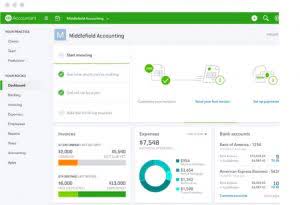No products in the cart.: $0.00
How to fill out a deposit slip for your bank

The teller uses the deposit slip as a reference point during the transaction. By comparing the information recorded on the deposit slip with the funds presented, the teller can verify that they match. If everything aligns, the teller then proceeds to credit the account and issues a receipt for the customer. A deposit slip requires a breakdown of funds being added to an account, categorizing deposits into cash, checks, and direct transfers. Properly itemizing each component ensures accuracy and helps track Catch Up Bookkeeping sources of funds.
- Consulting Firm that helps businesses like yours to achieve unique goals.
- A customer is required to fill out the deposit slip before approaching the bank teller to deposit funds.
- Signing the slip is required if you are getting cash from your deposit.
- Yes, you can deposit money without using a deposit slip, especially if you’re dealing with check deposits.
- If these fields are present and required, provide the requested information accordingly.
- In such cases, double-check the information to ensure its accuracy and make any necessary updates or corrections.
AI Tax Consultants: Leveraging Your Financial Paper Trail
A deposit slip contains sensitive financial information such as the account number and deposit amount. If a deposit slip falls into the wrong hands, it may be used to access the victim’s bank account without their knowledge. Furthermore, thieves might use the stolen information to create fake checks with the deposited funds or even attempt identity theft. When it comes to financial transactions, security is a top priority for both consumers and banks. While contra asset account deposit slips provide significant benefits in the form of documentation and proof of transaction, they also present potential risks.
Mobile Deposits

Enjoy the best and most efficient check-printing management all in one place. A deposit slip also requires you to specify the type of deposit, such as cash, check, or electronic transfer. This helps the bank to accurately record the deposit in your account. The completed deposit slip is bundled with the checks, bills and coins itemized on the form and presented to the cashier at the bank. Once the deposit has been processed, the cashier gives the customer a receipt, which states the total amount of the deposit, along with the date and time.
What are the benefits of recording deposits in transit?

Using a deposit slip can ensure that your money gets to its proper destination as smoothly and quickly as possible. You can also keep copies of deposit slips as receipts to prove that your bank accepted your transaction. Deposit slips are most often used when customers visit a brick-and-mortar bank branch. They can be used to make deposits both in the lobby and in the bank’s drive-through lane. In addition, some older ATMs require customers to use a deposit slip when depositing cash or checks. Yes, banks are indeed required by federal law to maintain records of deposits that exceed $100 for a minimum of five years.
- They are the fundamental component of transactions, allowing individuals and companies to deposit cash and checks into their accounts.
- It’s a simple step that gives you more control over your cash flow.
- By including deposits in transit, you avoid reporting errors and keep your records reliable.
- If you spot any mistakes or omissions during the review process, make the necessary corrections neatly and clearly on the deposit slip.
- It’s important to be as specific as possible when specifying the currency and denominations.
What are deposits in transit and why are they included in a bank reconciliation?
- Deposit slips also prevent unaccounted-for deposits from entering the system.
- Double-check each slip for accuracy, keep copies for records, and explore batch deposit services or digital options your bank offers for efficiency.
- Even minor errors can delay the deposit process and hurt your company’s reputation with the financial institution.
- A bank deposit slip is a printed form provided by banks that allows customers to deposit money into their accounts.
- Even though the deposit receipt demonstrates that the deposit was made, it only provides the deposit’s sum.
- The deposit slip provides the teller with the bank account number that should receive the funds.
- The box on the far right is for the decimal (or cents) portion, and the next box to the left is for the dollar amount.
Furthermore, deposit slips contribute to transaction history, enabling customers to reconcile account statements and aiding in legal matters when disputes or investigations arise. Overall, deposit slips play a vital role in maintaining transparency, accuracy, and trust in banking transactions for both parties involved. This compact form simplifies deposit transactions, aiding customers and banks in efficient record-keeping. Customers are encouraged to retain deposit slip copies for their records, making what is recorded on a deposit slip it a valuable tool for personal financial management and reconciling bank statements. In essence, the deposit slip streamlines deposits, benefiting both customers and banks by facilitating smooth transactions and maintaining clear financial records.


